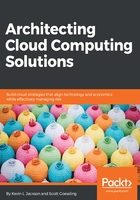
Change management
Cultural/organizational/policy friction occurs through changes to established norms, not because of the technology being used. When adopting cloud computing, companies must focus on the benefits from business model changes. Many changes are needed as businesses search for ways to support new growth, modernized product strategies, and constant economic pressures. The transition to cloud computing can be complex for many different reasons. Some of the most common include:
- New knowledge required
- Dynamic nature of infrastructure
- New cloud service management tools
- Rapid innovation and fast-moving market
- New management models
- Distributed ownership
- Continuous optimization
During cloud transitions, organizations are not only changing from a technology perspective, but they are also changing their mindset and culture, simultaneously. The following is a list of typical domain changes associated with moving from traditional models to the cloud. With each of these, there is also a simultaneous change to organizational culture, required skill sets, and inpidual mindsets:

Ideally, before cloud services begin to be utilized, focused change management strategies should be implemented. Change management plans should quickly focus on raising awareness, understanding the change, accepting the changes, and the commitment of the organization to the expected outcomes and the people associated with them. The focused change management and communications plans must relentlessly focus on providing data and messaging that support organizational change, modernizes mindset, and skill sets, highlights benefits, and raises awareness. The organization should review metrics and counter metrics to gauge culture change rates and determine if all communication channels are being leveraged with correct messaging and correct timing.
Cloud computing is transformational. The hardest part of any transformational strategy is changing the hearts and minds of the people in the organization. It is critical for leaders to be keenly aware of what to look for and to have metrics and counter metrics in place to show changes in organizational culture, transformation rates and progress toward desired outcomes. A key question to ask is if each team member knows what the vision is; that is, do they see the whole elephant or do they only see the part they are connected to? Do they understand how their part is connected to the whole? Refer to the following photograph:

Figure 3: Does the staff see the elephant and how their part is connected?
Indicative questions may include:
- Do they believe that this transformation is achievable?
- Are customers and service providers on the same page?
- Do they think they have sufficient resources to meet the schedule?
- Are the staff the right kind, in the right place, doing the right work?
- Do the various groups that are working together understand and accept the interfaces and hand-offs?
- Are accepted and consistent vocabularies and definitions being used across the enterprise?
Think of the IT industry as a tribe. The industry has its language, terminology, and standard phrases. The cloud has a bit of its dialect within the IT tribe. There are common practices, rituals, and super-secret handshakes among tribe members. As with any other tribe or culture, standard practices and dialect enable quick identification of outsiders, newbies, and those that may be a threat to the tribe. Is change likely to be adopted when the path forward lacks awareness for current practices or the messaging is communicated used a completely different vernacular? Not possible.
As cloud and things-as-a-service increase in adoption, change management, and communication plans are paving the way. A deep pe into effective communication planning and IT governance strategy could fill several volumes. Some guidelines for effective plans and strategies are:
- Communicate using the tribe vernacular
- Use industry standard terms and definitions
- Provide authoritative sources if possible
- Provide data and insight with each communication
- Reinforce benefits of change at every opportunity
- Ensure leaders are familiar with tribe language, customs, and rituals
Companies should also explicitly link demand-side governance with supply-side governance to improve efficiency and effectiveness as detailed in the following diagram. Metrics should be evaluated to create, modify, or delete as part of an enterprise continuous improvement process:

Figure 4: Linkage between IT governance and efficient implementation